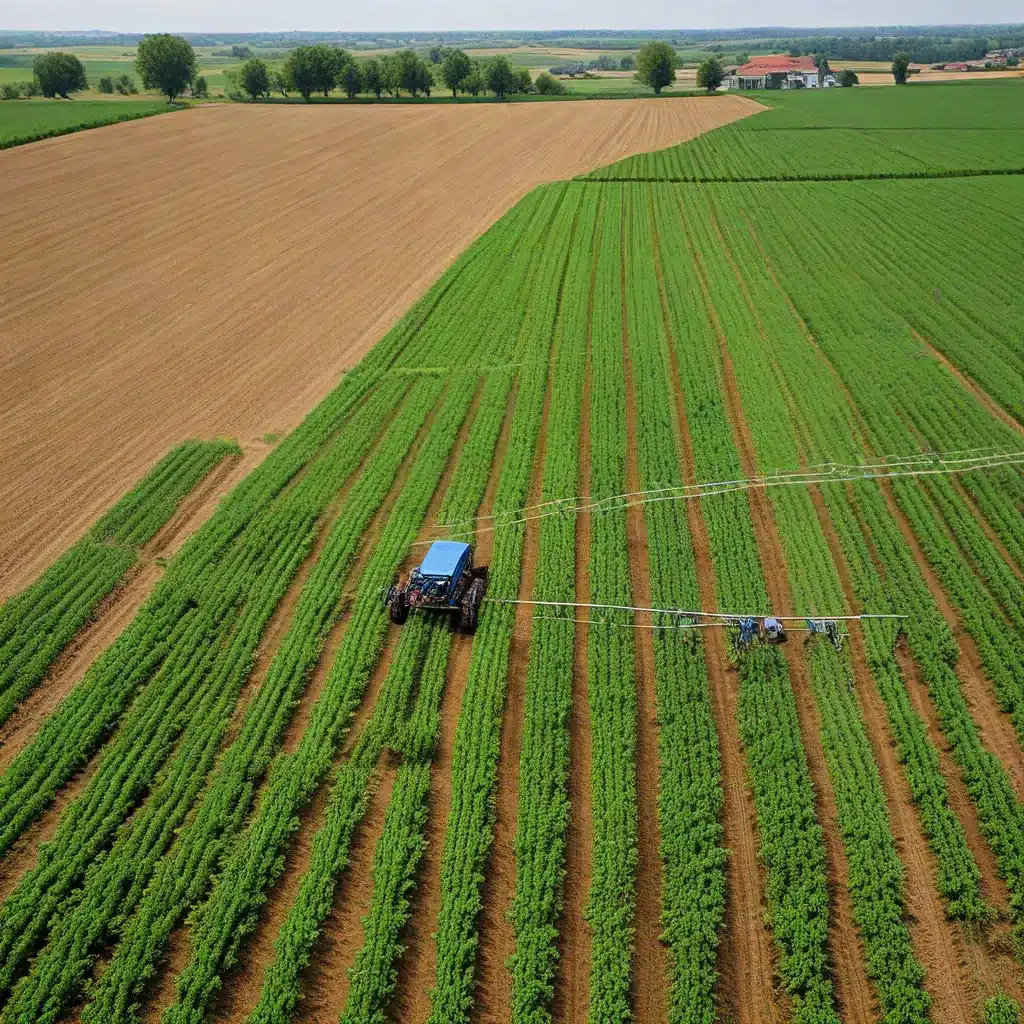
Revolutionizing Agriculture with Sensor Networks
Sensor networks have become a transformative force in modern agriculture, ushering in a new era of precision farming. By deploying a network of strategically placed sensors, farmers can now collect vast amounts of real-time data on soil conditions, weather patterns, crop health, and a myriad of other crucial factors that influence agricultural productivity.
These sensor-driven insights have unlocked unprecedented levels of efficiency and yield optimization. Farmers can now make data-driven decisions to fine-tune their operations, reducing waste, minimizing environmental impact, and maximizing the output of their land. From irrigation management to targeted pest control, sensor networks have become an indispensable tool in the quest for sustainable, high-yield agriculture.
Designing Scalable Sensor Network Architectures
At the heart of this agricultural revolution are the sensor network architectures that enable the seamless collection and analysis of data. These systems must be scalable, reliable, and energy-efficient to thrive in the demanding conditions of modern farming.
One popular approach is the hierarchical network topology, where sensor nodes are organized into clusters, each with a cluster head responsible for aggregating and transmitting data. This design promotes scalability by allowing the network to expand without overwhelming individual nodes. Additionally, the cluster heads can implement data compression and filtering techniques to minimize the burden on the network.
Another key consideration is power management. Sensor nodes in agricultural settings are often deployed in remote locations, making battery replacement a logistical challenge. Energy-harvesting technologies, such as solar panels or vibration-based harvesters, can help extend the operational lifetime of these nodes, ensuring continuous data collection without the need for frequent maintenance.
Securing Sensor Networks in the IoT Landscape
As sensor networks become increasingly integrated with the Internet of Things (IoT), the need for robust security measures becomes paramount. Cyber threats, such as data tampering, unauthorized access, and denial-of-service attacks, can have devastating consequences for precision farming operations.
To address these concerns, cryptographic techniques and access control protocols are employed to safeguard the integrity and confidentiality of the collected data. Blockchain technology has also emerged as a promising solution, enabling decentralized and tamper-evident data management within sensor networks.
Moreover, the edge computing paradigm, where processing and analysis are performed closer to the sensor nodes, can help mitigate the risks associated with cloud-based data storage and transmission. By keeping sensitive information within the local network, organizations can enhance their cybersecurity posture and reduce their vulnerability to external threats.
Enhancing Energy Efficiency for Sustainable Sensor Networks
Energy efficiency is a critical consideration in the design of sensor networks, particularly in the context of precision farming. Sensor nodes deployed in remote agricultural settings must operate autonomously for extended periods, often without access to reliable power sources.
Energy-harvesting technologies, as mentioned earlier, can help address this challenge by converting ambient energy, such as solar or vibrational, into electrical power. Additionally, duty-cycling techniques, where sensor nodes periodically enter a low-power sleep mode, can significantly reduce energy consumption without compromising data collection.
Adaptive sampling algorithms, which adjust the sampling rate based on environmental conditions or application requirements, can further optimize the energy usage of sensor networks. By only collecting data when necessary, these algorithms can extend the battery life of sensor nodes and minimize the energy footprint of the overall system.
Unlocking the Potential of Precision Farming with Sensor Networks
The integration of sensor networks and precision farming has unleashed a transformation in the agricultural industry. By leveraging data-driven insights, farmers can now make informed decisions, improve resource utilization, and enhance crop yields in a sustainable manner.
As the adoption of sensor networks continues to grow, we can expect to see further advancements in areas such as predictive analytics, autonomous irrigation, and precision application of fertilizers and pesticides. These innovations will not only boost agricultural productivity but also minimize the environmental impact of farming practices.
Moreover, the scalability and energy-efficiency of sensor networks will enable their deployment in diverse agricultural settings, from large-scale industrial farms to small-scale family-owned operations. This democratization of precision farming technologies will empower farmers of all sizes to optimize their operations and contribute to global food security.
In conclusion, the integration of sensor networks and precision farming represents a paradigm shift in the way we approach agricultural challenges. By harnessing the power of data and leveraging the latest technological advancements, we can unlock a future of sustainable, high-yield farming that nourishes both our communities and the environment.